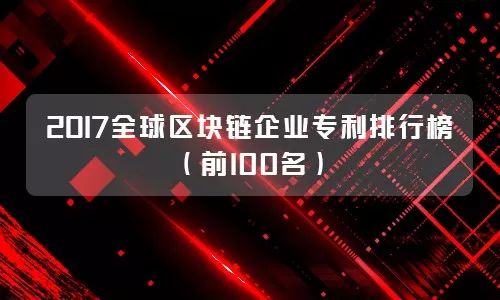
#文章仅代表作者观点,未经作者许可,禁止转载,文章不代表IPRdaily立场#
发布:IPRdaily中文网(IPRdaily.cn)
作者:Jacob C. Bachman律师 及 Walter C. Frank律师
供稿:Brinks Gilson & Lione律师事务所
原标题:美国近期“专利适格性”的胜诉案件着重于事实调查
本篇文章集合近期美国联邦巡回法院对不适格专利主题的性质,因在权利要求中列述了额外的要素而转化为适格专利主题的案件汇总。联邦法院认为权利要求主题只有在加入了一个超越“易于理解(well-understood)、常规(routine)、之前被研究员在该领域实践过的传统活动(conventional activity)”才可成为适格专利主题。
在35 U.S.C. § 101规定下,可授权专利主题包括“阳光底下一切的人为事物”,暗含不包含自然法则(laws of nature)、自然现象(natural phenomena)及抽象概念(abstract ideas),其均不可申请专利。
在最高法院对联邦法院Alice案判决意见予以肯定后,法院对不适格专利主题的性质是否因在权利要求中列述了额外的要素而转化为适格专利主题申请进行裁决。
权利要求主题只有在加入了一个超越“易于理解(well-understood)、常规(routine)、之前被研究员在该领域实践过的传统活动(conventional activity)”才可成为适格专利主题。
当适格专利主题被视为一项法律上的问题,不适格专利主题加入额外权利要求要素的转化则包含了事实问题。
在最高法院作出对Mayo案的裁决后,被告在专利诉讼中成功利用§ 101条款作为工具,通过辩称权利要求只采用了易于理解、常规及传统活动,在早期撤销动议中依法律判决对专利进行无效。这一趋势使得相当多的申请人对主题普遍涉及抽象概念或自然法则领域的申请减少递交量。
然而近期几项联邦巡回法院的判决建议,除了Mayo的判决意见外还有其它的考虑因素,特别在解决对事实问题的争议上,及通过使用§ 101进行简易判决动议及撤销动议来无效权利要求。
在Berkheimer v HP, Inc.一案中,联邦巡回法院认为在简易判决阶段对涉案领域内什么属于易于理解的事实问题作出判决为时过早,因此并不合适。
接下一周,在Aatrix Software, Inc. v. Green Shades Software, Inc.中,联邦巡回法院将这一推理延伸至此案的判决中,指出只在没有事实指控的情况下§ 101才可用于撤销动议,依法律判决权利要求无效,反之则阻止解决专利适格性问题。
最后,在Exergen Corp. v. Kaz USA, Inc.一案中,对Exergen所宣称的核心体温计算装置采用了关于体温的自然法则并无争议。这项案件中,在陪审团裁定主张的权利要求被侵权及并非无效后,被告基于不适格专利主题递交了无效权利要求的请求,地区法院驳回该请求。被告进行上诉,联邦巡回法院根据§ 101条款对专利适格性问题进行了重新审查,采用“明显错误”原则(clear error standard, 为了推翻地区法院的事实认定,上诉法院必须证明裁决存在“明显错误”。)复审了地区法院关于什么是常规、惯例及易于理解的事实认定。
联邦法院的结论是“尽管所主张的权利要求是基于自然现象,”该自然现象已转换成“非侵入性及准确测量人体体温的创新方法及实用装置”,因此涉案权利要求“并非传统、常规或易于理解的。”
作为对该结论的支持,联邦巡回法院依据基本的事实,指出“不能仅仅因为在现有技术文献中被披露,既认为一些权利要求是易于理解、常规及传统的。”法院随后指出原告在对所宣称发明进行测试及研发中所投入的大量时间和资金。
传统上由法律判决所主导的诉讼领域,近期的判决在对事实问题的关注上与日增长并在诉讼中呈现。
对于专利申请人来说,对权利要求的组合或转化使其不太可能被认为属于传统、常规、或易于理解进行的预测及定义需求增加,以确保专利组合可以作为商业工具被准备、维持或主张。
直至法院未来对什么可构成超越“易于理解、常规及传统活动”的发明构思加以阐明,建议专利申请人及诉讼律师应密切关注案件争议事项的事实。
附:英文全文
Recent Decisions In Favor Of Patent Eligibility Focus On Factual Inquiries
Patentable subject matter under 35 U.S.C. § 101 includes “anything under the sun that is made by man” with the implicit exception that laws of nature, natural phenomena, and abstract ideas are not patentable.[1]Following the Supreme Court’s affirmance of the Federal Circuit’s holding in Alice[2], courts determine whether the nature of otherwise ineligible subject matter is transformed into a patent-eligible application by reciting additional elements in the claim. The claimed subject matter is only patent-eligible if it adds an inventive concept beyond “well-understood, routine, conventional activity previously engaged in by researchers in the field.”[3]While subject matter eligibility is viewed as a matter of law, transformations of ineligible subject matter by additional claim elements involve questions of fact.
In the wake of the Supreme Court’s decision in Mayo, defendants in patent suits successfully utilized § 101 as a tool to invalidate patents as a matter of law on early motions to dismiss,by arguing that the claims employed only well-understood, routine, conventional activity. This trend has led some applicants to consider reducing the number of filings in subject matter areas where abstract ideas or laws of nature are common.
However, several recent Federal Circuit decisions have suggested there may be considerations beyond the holdings in Mayo, particularly to address disputes over questions of fact, and especially when motions for summary judgment or to dismiss use § 101 to invalidate claims.
In Berkheimer v HP, Inc.[4], the Federal Circuit held that it may be untimely and thus inappropriate at the summary judgment stage to resolve questions of fact about what was well-known by researchers in the field. The following week, in Aatrix Software, Inc. v. Green Shades Software, Inc.,[5] the Federal Circuit extended this line of reasoning to cases decided on the pleadings, noting that § 101 can be used in motions to dismiss to invalidate claims as a matter of law, only when there are no factual allegations that, taken as true, prevent resolving the patent eligibility question.
Finally, in Exergen Corp. v. Kaz USA, Inc.[6], there was no dispute that Exergen’s claimed core body temperature calculation device employed a law of nature about body temperature. In that case, after a jury found the asserted claims infringed and not invalid, the defendant moved for invalidity of the claims as ineligible subject matter, which the district court denied. The defendant appealed, and the Federal Circuit reviewed the issue of patent eligibility under § 101 de novo, applying the deferential “clear error” standard of review to the district court’s factual findings regarding what was routine, conventional, and well understood. The Federal Circuit concluded that “while the asserted claims are based in natural phenomena,”
the natural phenomena were transformed into “inventive methods and useful devices that noninvasively and accurately detect human body temperature,” and therefore were “not conventional, routine, or well understood.” In support of its conclusion, the Federal Circuit relied on underlying facts, noting that “[s]omething is not well-understood, routine, and conventional merely because it is disclosed in a prior art reference,”[7] and further highlighted the significant time and money invested in the testing and development of the claimed invention.[8]
In an area of litigation traditionally dominated by matters of law, recent decisions have focused on the growing importance of matters of fact and their presentation in patent lawsuits. For patent applicants, there is an increasing need to anticipate and define combinations or transformations that will not likely be perceived as conventional, routine, or well understood, to ensure that patent portfolios can be prepared, maintained, or asserted as effective business tools.
Until the courts further clarify what constitutes an inventive concept beyond “well-understood, routine, conventional activity,” applicants and litigators alike are well advised to pay close attention to the facts of the matter in dispute.
注释:
[1] Diamond v. Chakrabarty, 447 U.S. 303, 309 (1980); Mayo v. Promethius, 566 U.S. 66, 70-71, (2012).
[2] Alice Corp. v. CLS Bank International, 573 U.S. (2014). [3] Mayo v. Prometheus, 566 U.S. 66 (2012).
[4] Berkheimer v HP, Inc., No. 2017-1437 (Fed. Cir. Feb. 8, 2018).
[5] Aatrix Software, Inc. v. Green Shades Software, Inc., No. 2017-1452 (Fed. Cir. Feb. 14,2018).
[6] Exergen Corp. v. Kaz USA, Inc., No. 2016-2315 (Fed. Cir. March 8, 2018). [7] Id. at p. 10.
[8] Id. at p. 11.
发布:IPRdaily中文网(IPRdaily.cn)
作者:Jacob C. Bachman律师 及 Walter C. Frank律师
供稿:Brinks Gilson & Lione律师事务所
编辑:IPRdaily赵珍 校对:IPRdaily纵横君
推荐阅读

2017全球区块链企业专利排行榜(前100名)

2017年企业发明授权专利排行榜(前100名)

2017全国申请人确权商标持有量排名(前100名)
“投稿”请投邮箱“iprdaily@163.com”

「关于IPRdaily」
IPRdaily成立于2014年,是全球影响力的知识产权媒体+产业服务平台,致力于连接全球知识产权人,用户汇聚了中国、美国、德国、俄罗斯、以色列、澳大利亚、新加坡、日本、韩国等15个国家和地区的高科技公司、成长型科技企业IP高管、研发人员、法务、政府机构、律所、事务所、科研院校等全球近50多万产业用户(国内25万+海外30万);同时拥有近百万条高质量的技术资源+专利资源,通过媒体构建全球知识产权资产信息第一入口。2016年获启赋资本领投和天使汇跟投的Pre-A轮融资。
(英文官网:iprdaily.com 中文官网:iprdaily.cn)

本文来自Brinks Gilson & Lione律师事务所并经IPRdaily.cn中文网编辑。转载此文章须经权利人同意,并附上出处与作者信息。文章不代表IPRdaily.cn立场,如若转载,请注明出处:“http://www.iprdaily.cn/”



